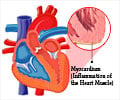
‘Two years of treatment with the anti-cancer protein lonafarnib could benefit children with Hutchinson-Gilford progeria syndrome (HGPS).’
Tweet it Now
The disease affects one out of every eight million babies born. Babies with HGPS normally look healthy at birth, but show developmental problems within their first year. Although the children show intelligence levels consistent with their age, they seldom grow taller than one meter or weigh more than 14 kilograms. They also have noticeable physical characteristics, such as lack of hair, prominent eyes, small chins, a lack of teeth and a loss of fat under the skin.Those with HGPS often die by their teenage years because of heart attacks, strokes or other issues related to the hardening of their arteries (a condition called atherosclerosis which is typically associated with the elderly).
In a previous study, Gordon’s group found that two years of treatment with the anti-cancer protein lonafarnib could benefit children with HGPS. This protein inhibitor helps them gain weight, brings relief for the headaches they suffer, and lowers the children’s risk of heart attacks.
"As with many diseases, there are no validated blood-related biomarkers for HGPS, and this presents a significant problem when measuring the effects of treatments employed within clinical trials," Gordon explains.
In this study, the researchers therefore set out to begin to identify specific protein-based biomarkers that researchers can use to gauge how their patients have progressed and if they have reacted positively to treatment.
Advertisement
Levels of more than 40 percent of the proteins tested were found to be significantly different in the HGPS samples than in non-HGPS control samples. These now need to be further investigated so that the most specific and relevant biological markers can be pinpointed and used further.
Advertisement
Source-Eurekalert













